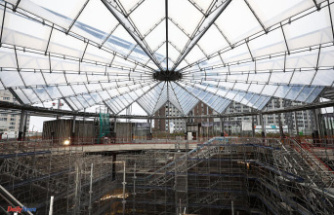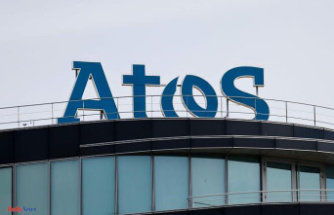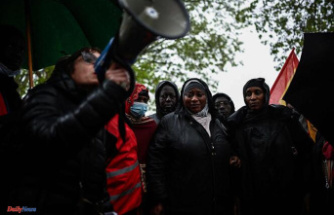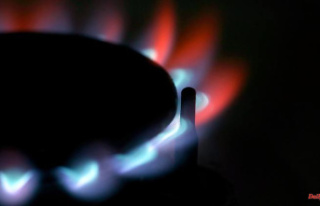Chancellor Scholz and Economics Minister Habeck are traveling to Canada on Sunday. Officially, it's all about the future, talks about hydrogen are planned. As far as the current shortage of natural gas is concerned, Germany will not be able to rely on the world's largest producer for the time being.
With gas imports from Russia threatening to dry up, Germany is looking for possible alternatives. One of them: Canada. The country is one of the largest natural gas producers in the world and also an important ally and close partner of Germany and the EU. Chancellor Olaf Scholz and Economics Minister Robert Habeck are traveling to Canada with a business delegation on Sunday to explore the possibilities. However, importing Canadian gas is difficult.
Russia or the important gas producer Algeria have the advantage of being able to deliver gas by pipeline as neighbors of the EU. A pipeline through the Atlantic, on the other hand, is not feasible, so imports from Canada and the USA are only possible in liquid form on tankers - so-called LNG (Liquid Natural Gas).
The problem is not new and also affects potential gas imports from the Arab world, such as Qatar. In Germany and other European countries, work has therefore been going on at full speed for some time to build LNG terminals for unloading gas tankers. The first ones are scheduled to go into operation on the German North Sea coast before the end of this year. However, in the case of Canada, there are also no terminals to load the tankers at all.
In Canada, natural gas production is concentrated in the western provinces of British Columbia, Alberta and Saskatchewan. There are also export opportunities there, but these are aimed at the Asian market. Within Canada, gas is routed simultaneously to the East and the USA via pipelines - but so far it has not been exported from there on a large scale.
Because construction projects for export terminals on Canada's east coast have progressed slowly in recent years and have even been frozen at times. With Russia's invasion of Ukraine and increasing demand in Europe, however, they received a new impetus. The government in Ottawa has promised support and explicitly refers to Europe's dependence on Russian gas.
However, the expansion of the LNG infrastructure is not expected to be smooth and timely. The focus is on two possible locations for LNG export terminals in New Brunswick and Nova Scotia. In both cases, however, gas could be shipped to Europe in a few years at the earliest.
In addition, the topic is problematic for Prime Minister Justin Trudeau's government from a domestic point of view. Ottawa has formulated ambitious climate goals itself - new plants for fossil fuels are inconvenient. Because of popular resistance to the development of shale gas deposits, there has been an organized protest movement for years anyway.
There are also conflicts with indigenous groups. Gas plants and pipelines often run through their areas. This is why protests are common in western Canada, some of which have turned violent in the past. The lines to the east would now at least have to be expanded, and conflicts with the indigenous people are also threatening the construction of new terminals. Resistance forms explicitly with a view to the announced visit from Germany.
Ottawa points to the potential to use gas infrastructure for hydrogen in the future. Officially, Scholz' and Habeck's trip is also about this future technology: They visit Stephenville in Newfoundland, where a company is planning a wind turbine for the production of hydrogen.












